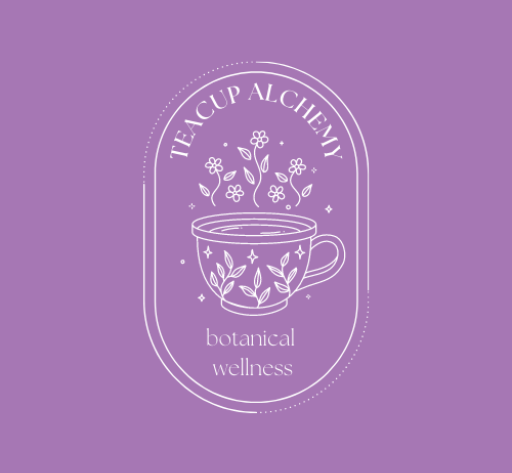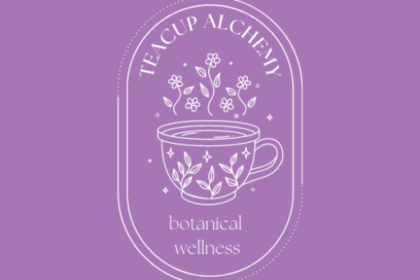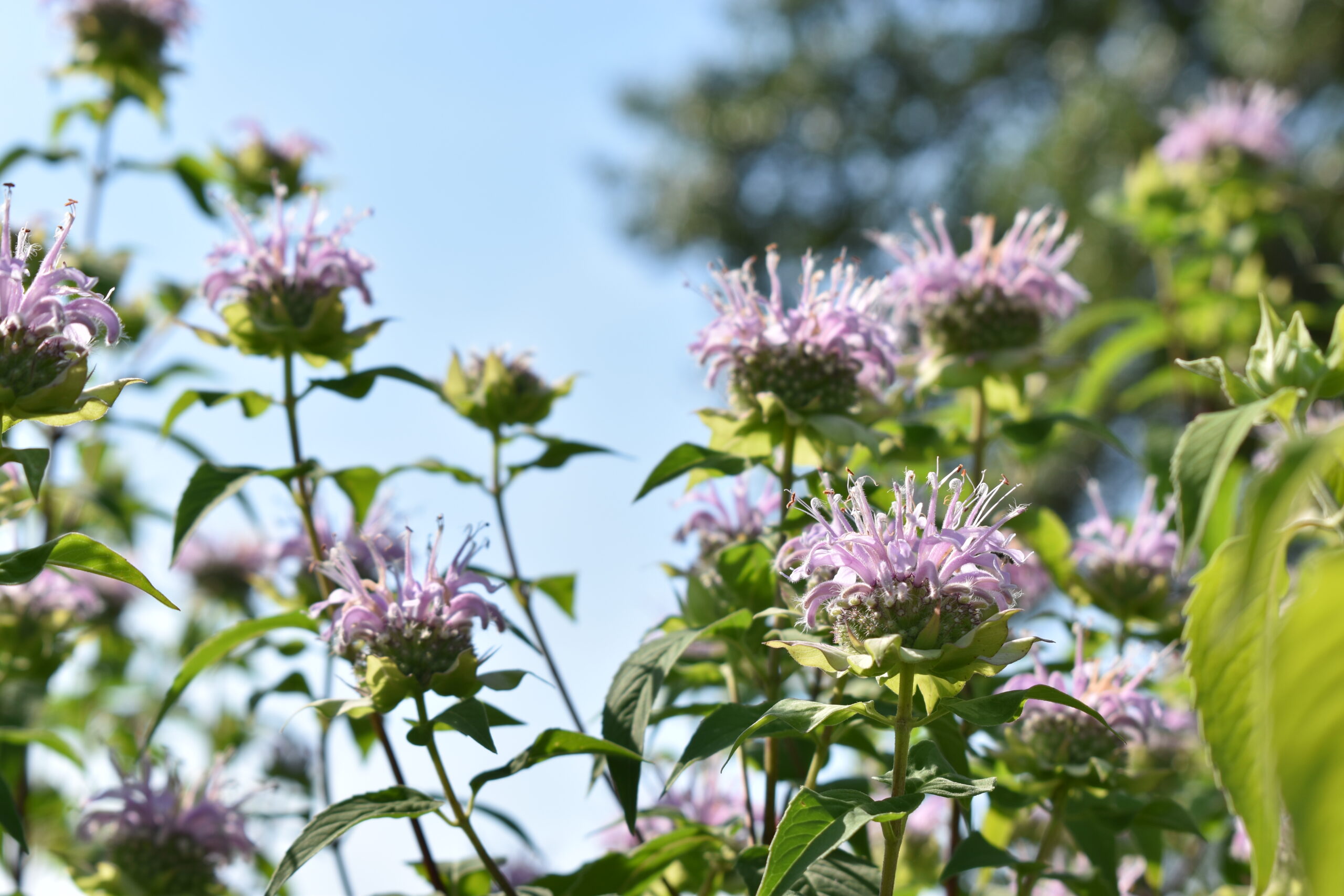Adaptogens, nervines, and nootropics are three classes of herbs that are great for nervous system support. All three can help our bodies cope with emotional and cognitive challenges. In today’s podcast, learn about these three herbal categories and some examples of each.
Nervines, nootropics, adaptogens, and the nervous system
Who can relate to stress and anxiety? Most of us! Things “get on our nerves.” Work and relationships can stress us out. We feel anxious from time to time and we worry. Even before the pandemic, anxiety was common. According to the National Institutes of Health, 31% of adults in the United States will experience an anxiety disorder at some point in their lives. So, as an herbalist, it’s natural to wonder “How can I use herbs to support a healthy nervous system?”
Welcome to the Teacup Alchemy podcast. I’m Agatha, herbalist and founder of Teacup Alchemy, a community resource for trusted herbal information. I produce podcasts, articles, and affordable courses about using herbs for natural wellness. In today’s episode, we’re talking about the types of herbs that support the nervous system.
First, let’s have a little nervous system review. This is a very simplified review, but it’s enough to give us context when we go on to talk about adaptogens, nervines, and nootropics and how they interact with the nervous system.
First off, there are two main divisions in the nervous system: the central nervous system and the peripheral nervous system.The peripheral nervous system can also be divided into the somatic nervous system and the autonomic nervous system. Let’s start with the central nervous system.
Central nervous system
The brain and spinal cord are the main parts of the central nervous system. The CNS controls things like awareness, memory, speech, and non-reflex movement. Neurons are the nerve cells that are found in the spinal cord, the brain, and in the peripheral nervous system. It’s common to read or hear about gray matter and white matter when you’re exploring the CNS.
The brain has “grey matter” (which actually isn’t gray in living tissue, by the way- it’s light pink because there are capillaries) and white matter. Grey matter is composed of neurons (nervous system cells) and other non-myelinated aspects of the nervous system. Gray matter is where the processing happens.
White matter is mostly myelinated axons and nerve bundles. Myelin is a special coating that protects the axons, or connections, between nerve cells. White matter is responsible for transmitting all of the electrical impulses to and from the brain and between nerve cells and the rest of the body.
Peripheral nervous system
So if the central nervous system is the brain and spinal cord, what’s left? They may be the most obvious parts of the nervous system, but they aren’t the only parts. There are plenty of neurons and axons outside of the brain and spinal cord, and these are known as the peripheral nervous system.
The peripheral nervous system is mostly made of neurons, axons, and swann cells. As we’ve mentioned, a neuron is a nerve cell and axons are branches or connector cables that stem from neurons and transmit to muscles, glands, and other neurons. Swann cells are glial cells, specialized nervous system cells that create myelin and protect the axons.
This is the framework for the somatic nervous system and the autonomic nervous system. The somatic nervous system is made up of motor nerves and sensory nerves. It controls movement and sensory perception.
The autonomic nervous system controls things that you don’t need to think about doing like digestion, breathing, and heart rate. It’s also responsible for reflexes like vomiting, coughing, and sneezing.
The autonomic nervous system includes the sympathetic nervous system and the parasympathetic nervous system.
The sympathetic nervous system controls involuntary responses. It’s responsible for the so-called “fight or flight” response. After the sympathetic nervous system is activated, the parasympathetic nervous system calms the body down.
What types of herbs support the nervous system?
Ok, now that we’ve had a mini-review of the nervous system, let’s talk about the herbs. Nervines, nootropics, and adaptogens are three classes of herbs that are particularly supportive of the nervous system. All three can help our bodies cope with emotional and cognitive challenges. Nervines have a wide range of actions across the entire nervous system. Nootropics more narrowly focused on the central nervous system. They support cognitive function.
Nervines
A nervine herb has the ability to act on the nervous system. That’s a remarkably broad definition, and this class of herbs can be subdivided even more. This language is borrowed from pharmaceutical parlance, by the way. It’s a holdover from when herbs and medicine hadn’t yet parted ways in the mid to late 1800s. Nervine herbs can be described by more specific actions such as:
- hypnotic (promotes sleep)
- anxiolytic (calming when anxiety is present)
- sedative (calming)
- antispasmodic (useful when there is cramping or spasms)
- anodyne (promotes a healthy response to pain)
- analgesic (promotes a healthy response to pain)
- relaxant (relaxes in the presence of physical tension)
- soporific (promotes sleep)
- calmative (mildly calming, mild sedative)
You can also think about nervines in three main categories: relaxants, tonics, and stimulants. Anxiety is often accompanied by physical tension. Antispasmodic herbs like valerian are one type of relaxant nervine, but some euphorics and sedative nervines are also physically relaxing without being specifically antispasmodic. Damiana and Albizia are examples..
Nervine tonics have a nourishing or balancing overall effect on the nervous system. Some herbalists like using the term nervine trophorestorative for nervine tonics, so you may hear that as well. Trophorestorative just means restoring normal function within a body system. It’s more specific than tonic, and helps differentiate between TCM concepts of tonic herbs and the Western mindset.
Stimulant nervines
Stimulant nervines increase alertness, processing, or activity. Things like green tea or coffee are obvious examples, as they contain the stimulant caffeine, but herbs that are nervine diffusives like prickly ash are another type, and so is schisandra’s nootropic ability to enhance natural focus.
Some herbs can be both stimulating and calming. Valerian is an example – especially when fresh, it seems to act as a stimulant for some people but helps other people unwind and calm down. Schisandra is another example, because it is simultaneously calming and yet increases focus and recall.
Nervines are further organized by their affinity with a specific organ system. Hawthorn’s affinity for the heart or lobelia’s affinity for the lungs are good examples. This is simply a way of classifying herbs according to where they seem to be especially useful. It doesn’t mean that they are only used when those organ systems are out of balance.
Nootropics
Next, let’s have a look at nootropics. According to the American Botanical Council, the definition of “nootropic” is an herb that “enhances memory, improves cognitive function and mood, and reduces oxidative and eschemic damage to the brain.”
Like adaptogens, a nootropic may be from natural sources or may be a pharmaceutical drug. Several mechanisms may explain their activity. Some herbal nootropics may increase circulation, like ginkgo. Others may have the ability to increase neurotransmitters and thereby upregulate brain activity.
Saffron, ginkgo, rosemary, sage, lemon balm, and calamus are potential herbal nootropics.
Calamus doesn’t get a lot of attention in Western herbalism. However, Ayurveda has many traditional uses for the plant. Certain strains do contain high levels of Beta-asarone, which is potentially toxic to the liver and is a suspected carcinogen. Because of this, calamus isn’t used as a flavoring ingredient and supplement in the United States. However, I mention it because The American Herbal Products Association recognizes that the North American strain of calamus contains low levels of beta-asarone and is safe. I don’t offer it to others, but I do use it personally.
Most (if not all) adaptogens overlap with nootropics and may have nootropic potential. These include ashwagandha, rhodiola, ginseng, tulsi, schisandra, and bacopa. However, not all nootropics are adaptogens.
Adaptogens
Once you have a good grasp of nervines and nootropics, you can better understand adaptogens. This class of herbs can help us in our overall response to stress. They support emotional, physical, and mental wellbeing.
Adaptogens tend to be amphoteric, that is they normalize. It’s especially common to hear about them being immune amphoterics, but in my experience their amphoteric action applies on many levels. They are, in essence, the great normalizers, with an affinity for the relationships between the nervous system, endocrine system, and the immune system as well as for the individual systems themselves.
Adaptogens can broadly support the nervous system as nervines through a range of mechanisms. They may also influence the nervous system more indirectly through hormonal cascades and the autonomic nervous system. That’s the endocrine system side and the way it has a relationship with the nervous system.
Another way adaptogens support the nervous system is through increased resilience toward generalized stress. They’ve been studied for an ability to level out the stress response. Rather than peaking after an alarm phase and crashing into a recovery phase (which we can feel as physical tiredness or emotional distress), adaptogens work with the sympathetic and parasympathetic nervous system to smooth out that response. They give our nervous system the ability to pause and, in essence, think, “Oh, ok. No big deal. I’ve got this.”
Supporting the nervous system with nervines, nootropics, and adaptogens
Whether you are supporting specific nervous system challenges with nervines, protecting and enhancing healthy cognitive function with nootropics, or gifting resilience to your nervous system with adaptogens, herbs provide a wide range of abilities and possibilities for vibrant mental and emotional wellbeing.
Thanks for listening to this episode of the Teacup Alchemy podcast. We are reader and listener supported. If you enjoyed this episode of Teacup Alchemy, please consider sharing a tip in our Ko-Fi tip jar!
Our Ko-Fi page is also a great place to keep up with behind the scenes news and events.
References
National Institute for Mental Health (2017). Statistics, any anxiety disorder.
American Botanical Council (2016). Terminology.
Suliman, Noor Azuin et al. “Establishing Natural Nootropics: Recent Molecular Enhancement Influenced by Natural Nootropic.” Evidence-based complementary and alternative medicine : eCAM vol. 2016 (2016): 4391375. doi:10.1155/2016/4391375
Panossian, Alexander, and Georg Wikman. “Effects of Adaptogens on the Central Nervous System and the Molecular Mechanisms Associated with Their Stress-Protective Activity.” Pharmaceuticals (Basel, Switzerland) vol. 3,1 188-224. 19 Jan. 2010, doi:10.3390/ph3010188
Photo Credit: Pixabay
A freelance writer and herbalist since 2011, Agatha is dedicated to creating an online reader and listener supported platform supporting her work as an herbalist. Her focus in herbalism includes sustainable agriculture, community wellness and accessibility, and botanical conservation.



